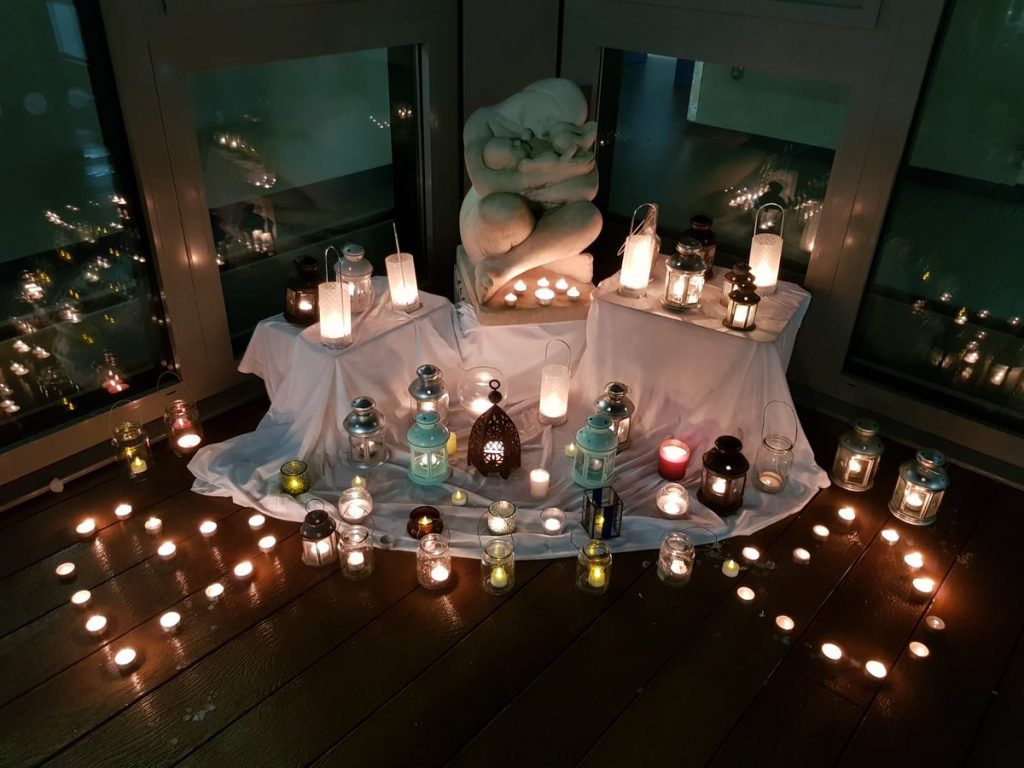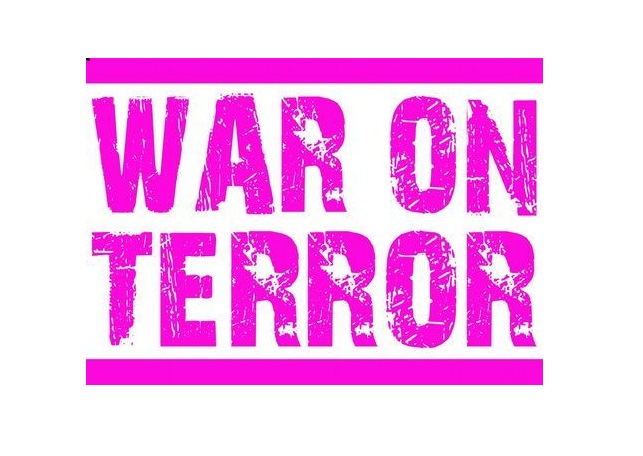Trigger Warning: This post contains descriptions of miscarriage. Please prioritize your own self-care if you read further.

December 1st is the First Sunday of Advent, which means for many women the beginning of a month of liturgical trauma. It doesn’t have to be this way, of course. And many preachers don’t even realize how their words wound. So for those who have the power to preach, this post is an invitation to prayerfully consider the realities of women’s embodied experiences of pregnancy loss when discussing Mary’s pregnancy in Advent. If you plan to talk about pregnancy in your homily, keep in mind that it is not inevitable that pregnancy leads to the safe delivery of a healthy child.
According to the Office of Women’s Health, U.S. Department of Health & Human Services, as many as 10-15% of confirmed pregnancies are lost. The actual number may be much higher as many take place before a woman knows that she is pregnant. Before twenty weeks, most providers use the term “miscarriage” or “spontaneous abortion” to describe the pregnancy loss. After twenty weeks, losing a pregnancy is called stillbirth. About 24,000 stillbirths were reported in 2014 according to the CDC, who notes that racial disparities persist in that Black women experience stillbirth at twice the rate of white women.
What does pregnancy loss feel like?
It depends.
There can be a tremendous invasion of privacy, especially for those who seek care at a clinic or doctor’s office. Providers who are there to help them may instruct them to take off all clothing, the ultrasound jelly is always cold and sticky, there are blood tests, they may be poked and prodded and scraped out inside. Invasive tests and questions follow. Many women experience severe cramping, heavy bleeding, passing of large clots, back pain, exhaustion, diarrhea, and nausea. Emotional turmoil can compound physical pain. There can be a feeling of betrayal by one’s body. Sometimes women feel betrayed by God, lost, in a fog of grief, forced to face shattered dreams and hopes. While the physical symptoms decline after two weeks, the grief a woman experiences often takes months or even years and many find that counseling or therapy helps during this difficult time. Women can feel anger, guilt, shock, denial, confusion, disorientation, depression, withdrawal, lack of energy, yearning, jealousy, rage, numbness, and many other variations of these totally normal responses to loss.
Hearing Women’s Stories
Women’s stories of pregnancy loss abound on the internet; some examples are here and here. Books include Linda Layne’s Motherhood Lost and Kathe Wunnenberg’s Grieving the Child I Never Knew. I’m on a private Facebook group of women in which some regularly share their pregnancy loss stories, and they are heart-wrenching and devastating. I guarantee that no matter your age or gender, each person reading this knows someone who has experienced pregnancy loss. Attentive listening to women’s stories can invite faith leaders to recognize the complex challenges that everyday Catholics are dealing with when they seek the grace of the Eucharist this Advent.
Why is the sound off? I thought to myself as our baby boy finally appeared on the screen motionless. The ultrasound technician began to frantically move her magic wand on my stomach, repositioning it from one angle to another. With each move she got quieter.
“I need to show this picture to the doctor,” she said without any expression on her face. Avoiding eye contact with either me or Peter, she left the room. Minutes later, the doctor walked in and informed us that our baby had passed.
Peter and I held each other and cried in the ultrasound room. Every couple of minutes we were interrupted by a doctor explaining my options. I was told I could wait to let the baby come out of my body naturally or he could be removed. I desperately wanted to still be pregnant, but I did not want to go on any longer with my baby inside me while knowing he was no longer alive. I opted to have the procedure to remove his body that afternoon.
Within minutes, the doctor who would perform the dilation and curettage, or D&C as it’s more commonly known, called. There were two ways I could go through this: while sedated through an IV, which would leave me mostly asleep and with no memory of the procedure, or after taking oral medication, which would leave me relaxed but aware of what was happening…….
We lost Ceol in April. There are days now that I wake up a grief warrior ready to be vulnerable with the world and other days when I only feel safe with Peter and Fianna. I cry and think of Ceol when I see a pregnant woman or a beautiful newborn baby. I’m angry that I lost another person I loved and I’m fighting to believe that life will bring me beauty again along with this sadness.
Every day, I’m still learning how to grieve Ceol. There is no ritual for mourning a baby who was never born. There is no body to visit, there are no ashes to throw. So Peter and I are finding our way together. We ceremoniously threw sand, instead of ashes, into the sea on a beautiful empty beach near Half Moon Bay. I will now always think of Ceol when I visit the ocean and I will hear his music that never got a chance to be played. And I’m openly speaking about Ceol and my miscarriage so that he and that experience are not erased by silence.
I understand that sharing personal news does not always result in positive responses. Some comments from friends and acquaintances have left me feeling hurt and angry. I’ve heard everything from “This happened for a reason” to “It’s Mother Nature taking her course” to “At least you have Fianna” and “Be grateful for X, Y, Z in your life.” Even though the people who said these things ultimately meant well, their responses minimize my grief and the complexity of emotions that I am feeling.
Conversations about death and loss make some people uncomfortable and the topic of miscarriage brings additional unease. Miscarriage is often dismissed as a women’s issue ― an experience that women are expected to grit and bear silently on their own. But, as Brené Brown said, “shame derives its power from being unspeakable.” Silencing these stories about miscarriage, which are more common than many people realize, creates shame and I will not be ashamed of my loss.
I will never forget the day my husband, Marc, and I received the devastating news that would change our lives forever. I had a perfectly normal pregnancy for 39 weeks. But during a routine visit with my doctor at 39 ½ weeks, we found out our daughter, Harper, didn’t have a heartbeat. My due date was just three days away.
We were in complete shock—shattered and utterly heartbroken. Early the next morning, after a very long and sleepless night, we arrived at the hospital where I was induced into labor to give birth to a baby we could not bring home. Fourteen hours later, I delivered Harper Elizabeth. She was seven pounds and eight ounces with a head full of black hair. She had my lips and long fingers and her daddy’s cheeks and nose. We loved her so deeply. We were able to spend a few brief but precious days with her in the hospital before we had to say goodbye forever to our beautiful baby girl.
After that, we faced the incomprehensible task of returning home with empty arms to plan her funeral.
So how can listening to these women’s experiences transform preaching?
Let’s talk about the basics. Advent is a liturgical season in which we celebrate the coming of Christ at Christmas. The incarnation is the doctrine that God became human in the person of Jesus. The stories we tell include the story of Mary’s pregnancy and delivery of a healthy baby boy.
Pregnancy can be a beautiful and wonderful experience for women and their partners and family members and faith communities. It can also be scary, painful, and even deadly. Sometimes women, like Kari, leave the hospital to plan a funeral.
This does not mean that men need to tiptoe around issues of women’s embodiment. Actually, it would help if the complexity of women’s embodied experiences were acknowledged and wrestled with in our faith communities. Menstrual blood is not an embarrassing reality. Gyneological health is nothing to be ashamed about. Miscarriage should not be stigmatized. Don’t further women’s pain by acting like silence or secrecy about women’s bodies makes us holy. It doesn’t. In fact, it can lead to shame and loneliness which compounds pain instead of healing. Some women will have trouble getting into the Advent spirit of “joyful hope” because of their grief. That’s ok. Accompany them in their grief. Let them talk about what they are going through. Listen.
Also, now that abortion has been named again as the “preeminent” moral issue the bishops say we are facing, it is incumbent on faith leaders to do their homework and actually understand the medical realities women experience when they are facing pregnancy loss and what procedures, including D&C, are sometimes necessary to help women’s bodies heal from pregnancy loss. Oversimplification of terms about the “intrinsic evil” of abortion from the pulpit when a woman’s medical record may recently have been updated to include “spontaneous abortion” or “aspiration” can be deeply confusing and spiritually unhelpful. Also, delaying or withholding necessary medical treatment in Catholic hospitals can be dangerous and even deadly for women.
While the Catholic Church has no official ritual specifically for mourning pregnancy loss, some parish communities have created memorials, special liturgies, and grief support groups for people struggling after pregnancy loss. Much more needs to be done, but in the mean time, our gatherings for Sunday Eucharist can be opportunities to name this experience. Sometimes a carefully crafted petition during the Prayers of the Faithful can acknowledge to women in the pews that they are not alone. And any time that one addresses pregnancy, one can do so with compassion and sensitivity to the women who, in that very moment, may be bleeding in the pews or thinking about how old her child would have been if the child had been born.
It is okay if preachers don’t have easy answers. We know that clergy are human. But if you don’t know about what happens to women’s bodies, don’t be afraid to read up on it. Validate the feelings of suffering women. Name the difficulties. And stick to the gospel– you know, the part about God loving us so much that God entered into this messy, broken world and showed us what it means to love one another. That’s what Advent is all about.


